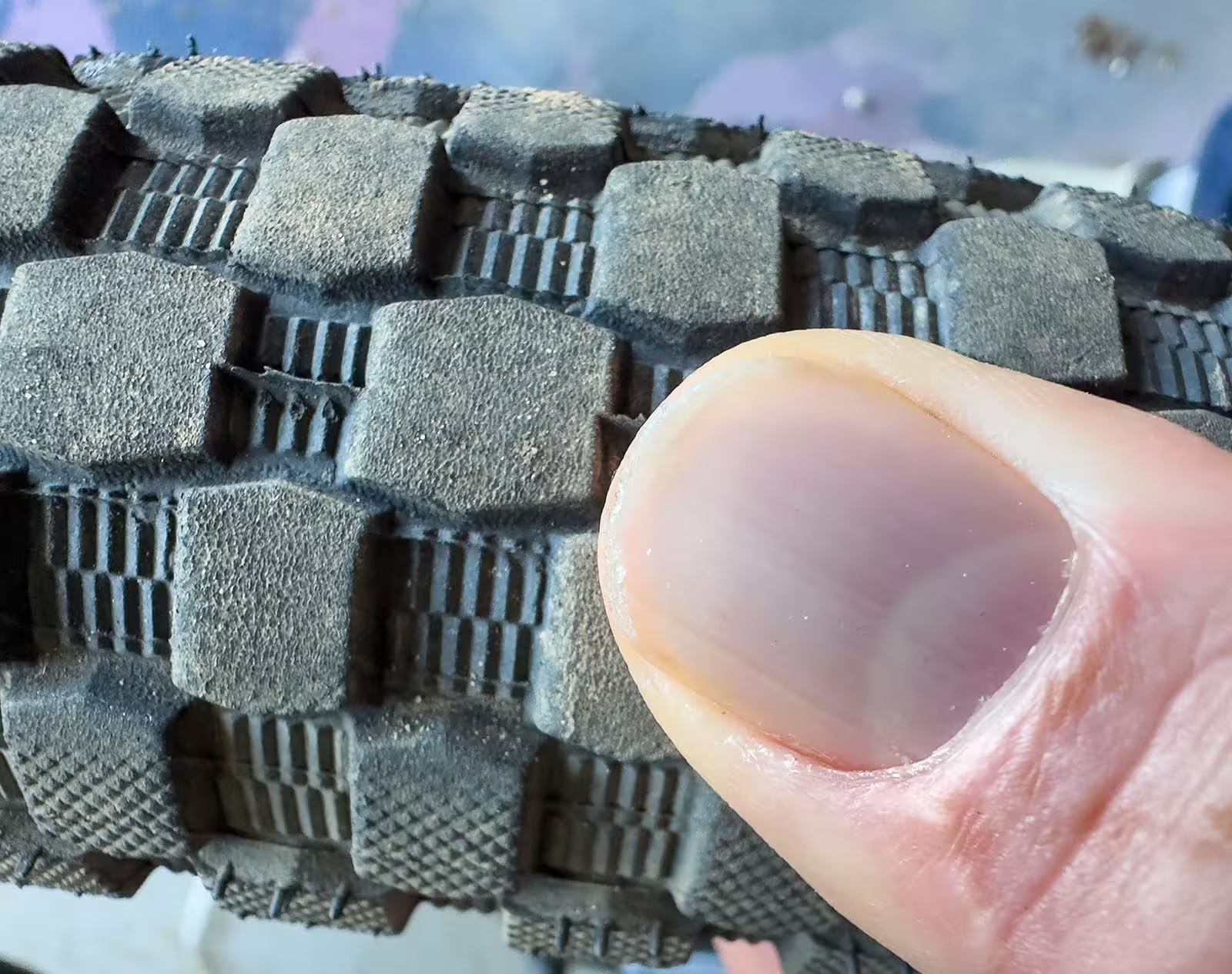It happened just the other day; my buddies came to ride my local spot and asked me the dreaded question, “what PSI are you running?”
I find this question so annoying. Mostly because I have no idea. I’ve never needed to keep track of this number. So my answer is useless; because I like my PSI hard. Not too hard obviously, but hard. You know how you tell? Use your thumb. Try to push the tread inwards toward the rim. If you can touch the rim through the tire, it’s too soft. If there’s absolutely no give at all, it’s probably too hard. It’s that simple.
If I’m carving a berm and feel my tire start to fold, it’s too soft. So I’ll pump it up. If my rims are touching roots as I roll over them, I’ll add some air. If I’m feeling every minuscule root, rock and pebble, plus losing traction on the uphill I’ll let some air out. It isn’t rocket science.
The equation
But according to the internet it is rocket science. 1.45 million pages are dedicated to the old, ‘what should my PSI be,’ question. The first video that popped up on mountain bike tire pressure was twelve minutes long. Twelve minutes! The lady went into everything involved; type of trail, trail conditions, rider weight, tire sidewalls, type of tire, type of bike, rider skill level, ambient temperature ad infinitum. She even nearly gave us the alchemist’s equation for tire pressure; 20 per cent of your body weight. But then she quickly backpedaled on that commitment and concluded with this; “There’s no magic formula. Experiment. You are the biggest expert on you.”
I’ve put in a request to get those twelve minutes back.
Further research on revealed this invaluable piece of info: your tires should be somewhere within the manufacturer’s suggested upper and lower guidelines. Thanks interwebs. What would we do without you?
The real takeaway from my wasted time on Google is that if someone asks you what PSI they should run, you need a library of data to give them an answer. You need to figure out if they’re running tubes or tubeless, take into account the wheel size, calculate their weight (with helmet and gear), calibrate for atmospheric pressure and determine if Mercury is in retrograde. Then you punch it all into something similar to the quadratic equation and wait for your room-sized supercomputer to spit out an answer. Whatever number that gives you, ignore it and pump up your tires till they’re hard. If…
Click Here to Read the Full Original Article at Canadian Cycling Magazine…

